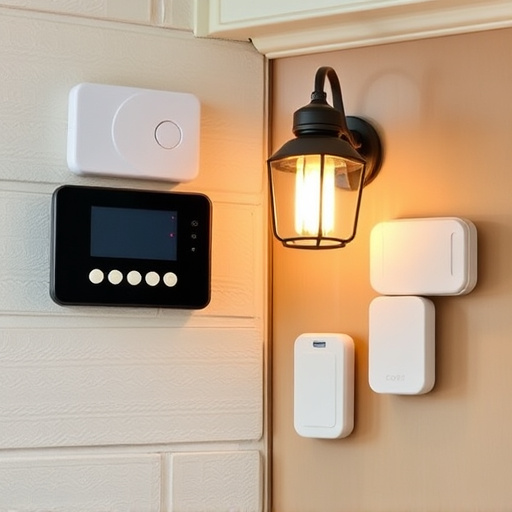DIY home alarm systems are gaining popularity as a cost-effective and flexible alternative to traditional security services, eliminating monthly fees and allowing for customized protection. These systems use sensors to detect movement or events, triggering alarms via a control panel and often providing remote monitoring through smartphone apps. By strategically placing sensors and integrating smart technology, homeowners can ensure robust security without professional fees, enhancing peace of mind and family safety.
“Elevate your home’s security without breaking the bank or signing long-term contracts with this comprehensive guide to DIY home security alarm systems. Discover the freedom of self-managed protection and learn how to install, customize, and optimize your own alarm network. From understanding the basics and choosing components to enhancing safety measures, we’ll equip you with the knowledge to create a robust, fee-free security system tailored to your needs. Embrace peace of mind with our practical tips for DIY home alarms.”
Understanding DIY Home Alarm Systems: Benefits and Basics
DIY home alarm systems are growing in popularity as an affordable and flexible alternative to traditional security services. These systems empower homeowners to take control of their safety, offering a range of benefits. Firstly, there’s no monthly fee attached, making them a cost-effective solution. Homeowners can install these systems themselves, saving on professional installation costs. This also allows for customization according to specific needs and preferences.
The basics of a DIY home alarm system include sensors that detect movement or specific events, such as door or window openings, and a control panel that triggers an alarm if any sensor is activated. Many systems now come with smartphone apps, allowing users to monitor their homes remotely and receive alerts when potential threats are detected. This technology provides peace of mind and gives homeowners the ability to respond swiftly to security incidents without relying on external monitoring services.
Components and Setup: Building Your Own Security Network
When building your own DIY home alarm system, understanding the components and how to set them up is crucial. The system typically consists of sensors, control panels, and alerts. Sensors can include door/window contacts, motion detectors, and glass-break detectors. These are strategically placed around your home to monitor entry points. The control panel acts as the brain of the system, processing signals from the sensors and determining whether an actual security breach has occurred. Alerts can be local sirens or alarms, or they can be sent wirelessly to your smartphone via an app, allowing you to monitor your property remotely.
Setting up your DIY home alarms involves connecting these components according to your home’s specific layout and security needs. You’ll wire the sensors to the control panel, ensuring each sensor is programmed to trigger the appropriate alert. Test the system thoroughly to make sure everything functions as intended. This setup process empowers you to create a customized security network tailored to your home’s unique requirements without incurring monthly fees.
Enhancing Safety: Tips for Optimizing Your DIY Alarm System
When setting up a DIY home security alarm system, it’s crucial to think holistically about enhancing your family’s safety. Beyond simply installing sensors and triggering alarms, there are several tips to optimize your DIY alarm system’s effectiveness. First, ensure comprehensive coverage by placing sensors at strategic points throughout your home, including doors, windows, and valuable asset areas like safes or offices. Second, integrate smart technology for remote monitoring and control via smartphone apps, allowing you to stay alert and responsive even when away from home. Additionally, regular maintenance and testing are essential; test all sensors periodically to ensure they’re functioning correctly and replace batteries as needed. By implementing these tips, your DIY home alarms can provide robust security without the hefty monthly fees associated with professional systems.
